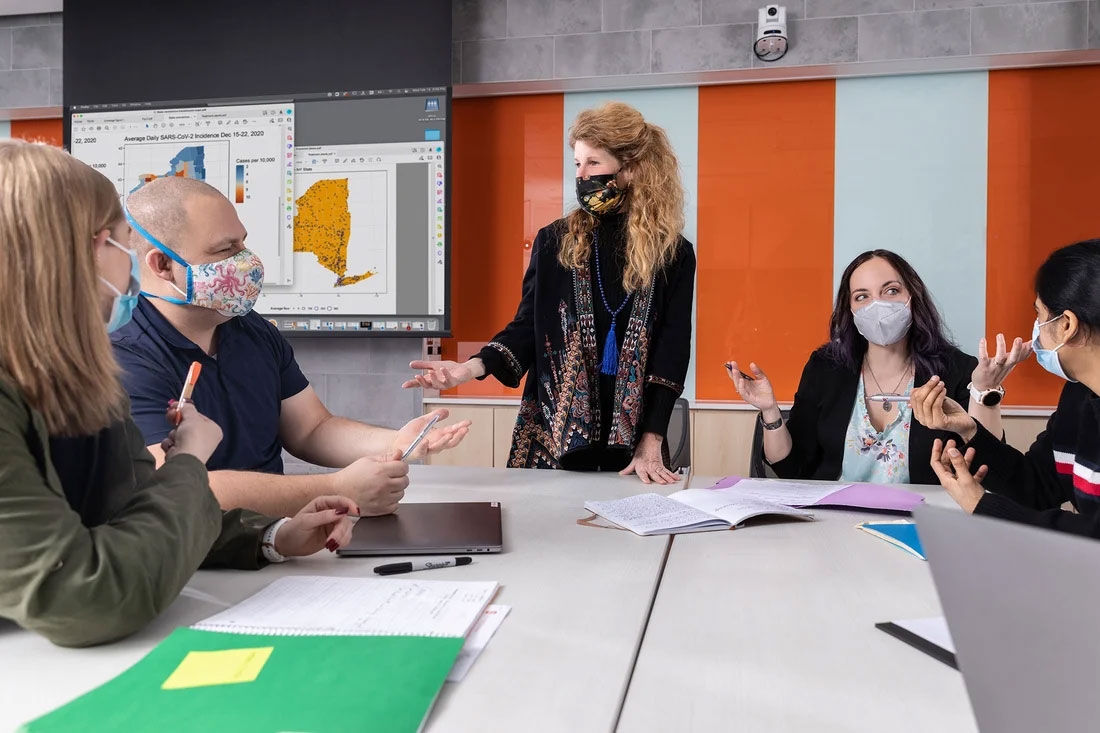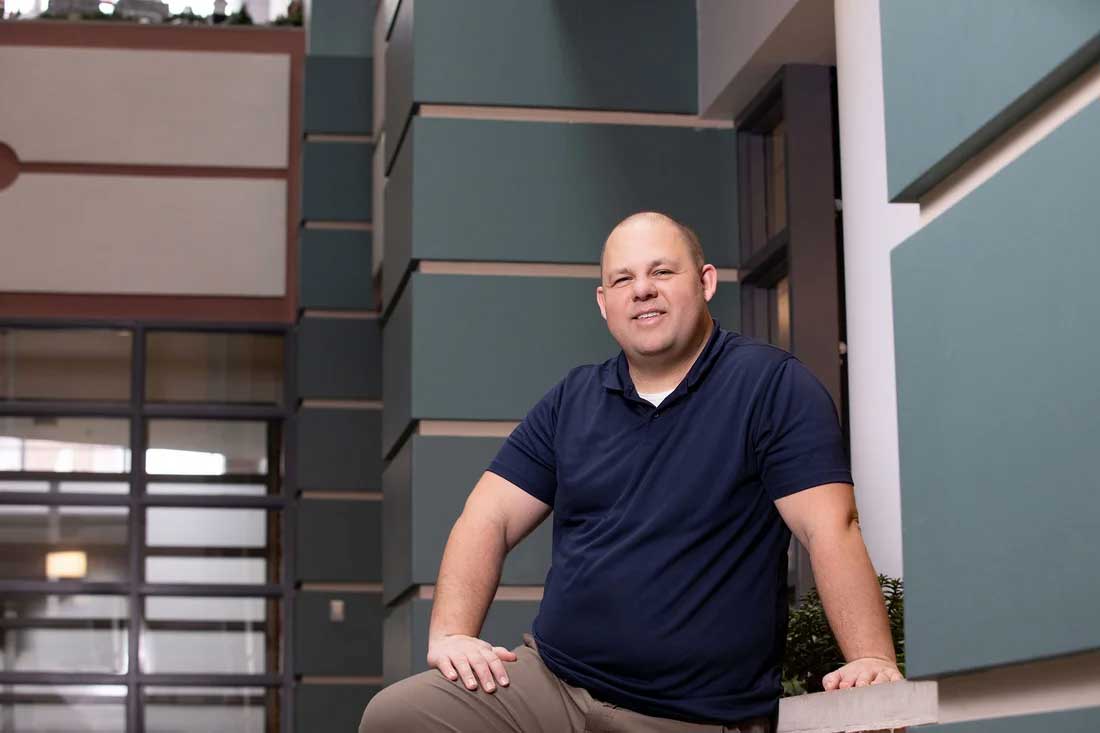The idea is simple: measure traces of the virus in community wastewater. When the levels increase, it’s an early sign that the risk of transmission in the area is growing. The sewage tells the story, giving public health experts a three- to five-day warning of the need to protect communities through steps like social distancing advisories.
“Early on in the pandemic, a wastewater surveillance system would’ve been fantastic for many of the counties in New York state, but we didn’t have it built,” says epidemiologist David Larsen, who spearheaded the research project with an interdisciplinary team of experts in coordination with the New York State Department of Health.
Today, a statewide surveillance system is well on its way to being complete. “My goal was to build the infrastructure for New York state,” Larsen explains. “That includes the data. It includes relationships with the wastewater treatment plants. It includes the knowledge to make this an actionable, useful tool for local health departments and the public.” Larsen is also an integral member of the University’s Public Health Team, which leads the University’s pandemic response.
Now Larsen and colleagues in the Falk College are harnessing the power of this infrastructure to protect public health through the rest of this pandemic and far beyond.

Seeing the Whole Iceberg
Wastewater surveillance offers not only an early warning of potential virus transmission but a more complete picture. “One of the challenges with individual testing is that you have to get all those individuals to get tested,” explains Professor Brittany Kmush, a vaccine expert at Falk and a member of the Public Health Team. “Wastewater surveillance helps capture data from people who don’t go to the doctor, since most people who get COVID don’t get very, very sick, and we can miss them in a lot of our traditional surveillance methods.”
The result is a more comprehensive, objective measure of the presence of disease at the population level within a particular community.
“In epidemiology we talk about the tip of the iceberg when we see cases or hospitalizations or death that represents what’s visible to the health system,” Larsen says. “Then there’s this huge underlying mass of transmission that’s invisible, and wastewater surveillance captures that entire iceberg.”
The Right Message at the Right Time and Place
Geographic precision is another benefit of wastewater monitoring. Early statewide COVID-19 lockdowns required people to mask or isolate even in areas where transmission risk was still relatively low.
Here, Kmush sees an opportunity to refine public health messaging for maximum impact. “If we could tailor some of those messages on a local level—this county needs to lock down for a couple of weeks, and once the wastewater is better, we can open up a little bit more—I think that would be more effective at changing human behavior than broad sweeping national or statewide lockdowns.”
With wastewater as a guide, public health experts could limit public health actions to areas where the emerging threat is significant, issuing less constrictive “stay local” messages in communities where the risk of transmission is low.

From Disease X to Drug Use
Wastewater analysis provides valuable information that experts could use to support public health long after the COVID-19 crisis has receded from the spotlight. “One of the reasons for building this wastewater surveillance infrastructure is to improve our health security for the next emerging pathogen,” Larsen says. “The general term for it is Disease X.”
The approach could also be expanded to detect public health threats other than pathogens. Kmush cites antibiotic resistance as an example, based on the presence of antimicrobials in sewage. “Knowing when to prescribe which types of antibiotics for the community as well as in a specific hospital could be really useful,” she explains.
Getting a clearer picture of community-level substance use is another innovative possibility. Professor Dessa Bergen-Cico, an addiction specialist at Falk, says monitoring the presence of drugs in wastewater could supplement the traditional survey-based approach to tracking emerging trends in substance use. “For example,” she explains, “it could give you an idea of the necessary staffing levels for first responders and what they need to be aware of or on the lookout for.”
Bergen-Cico is excited about where this research collaboration could lead and what it means for students. “Beyond the public health research component, I think this has been a fantastic opportunity for the undergraduate students, graduate students and faculty all working on wastewater analysis,” she says. “It’s a really novel emerging skill and specialization.”
Getting a clearer picture of community-level substance use is another innovative possibility. Professor Dessa Bergen-Cico, an addiction specialist at Falk, says monitoring the presence of drugs in wastewater could supplement the traditional survey-based approach to tracking emerging trends in substance use. “For example,” she explains, “it could give you an idea of the necessary staffing levels for first responders and what they need to be aware of or on the lookout for.”
Bergen-Cico is excited about where this research collaboration could lead and what it means for students. “Beyond the public health research component, I think this has been a fantastic opportunity for the undergraduate students, graduate students and faculty all working on wastewater analysis,” she says. “It’s a really novel emerging skill and specialization.”
An SU Story by Elizabeth Myers originally published on July 26, 2022.
